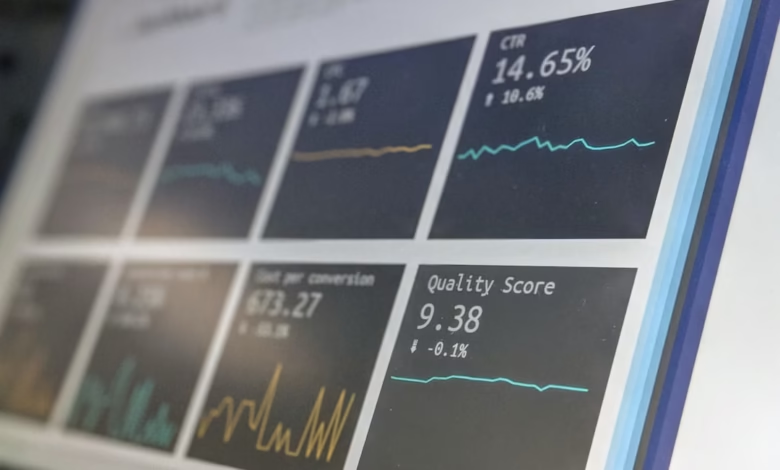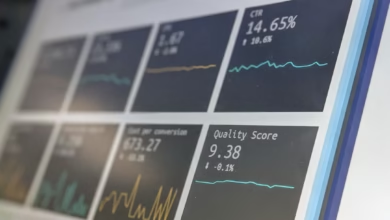Mastering Technical Analysis: Essential Charts and Patterns for Effective Trading Strategies

In the dynamic world of online trading, understanding market movements is crucial for success. Technical analysis has emerged as a vital tool for traders across various markets, including stock trading, forex trading, and crypto trading. This analytical approach leverages charts and patterns to forecast price movements, enabling traders to make informed decisions. By examining historical price data and identifying trends, technical analysis helps traders develop effective trading strategies, whether they’re engaged in day trading, swing trading, or derivatives trading.
In this article, we will explore the fundamentals of technical analysis, highlighting key charts and patterns that can enhance your trading prowess. We’ll delve into practical trading strategies applicable to various forms of trading, including options trading, futures trading, and commodities trading. Moreover, we’ll discuss the critical role that technical analysis plays in risk management and trading psychology, particularly for day and swing traders navigating the complexities of the market. Join us as we uncover the power of technical analysis and equip you with the tools necessary for successful trading across different platforms.
- 1. Understanding Technical Analysis: Key Charts and Patterns for Successful Trading
- 2. Trading Strategies: How to Use Technical Analysis in Stock, Forex, and Crypto Trading
- 3. The Role of Technical Analysis in Risk Management and Trading Psychology for Day and Swing Traders
1. Understanding Technical Analysis: Key Charts and Patterns for Successful Trading
Technical analysis is a critical component of successful trading across various markets, including stock trading, forex trading, and crypto trading. By utilizing charts and patterns, traders can forecast market movements and make informed decisions. Understanding the foundational aspects of technical analysis is essential for developing effective trading strategies.
One of the primary tools in technical analysis is the price chart, which visually represents the historical prices of an asset over time. There are several key types of charts used in trading:
– **Line Charts:** These charts display the closing prices of an asset over a specified period, providing a clear visual of price trends.
– **Bar Charts:** Bar charts show the opening, closing, high, and low prices for a given time frame, allowing traders to analyze price movements more comprehensively.
– **Candlestick Charts:** Widely used in day trading and swing trading, candlestick charts offer insights into market sentiment, showing price movement within a specific period while highlighting trends and reversals.
In addition to charts, recognizing patterns is vital in technical analysis. Common patterns include:
– **Head and Shoulders:** This pattern indicates a reversal in trend and is seen as a signal for potential entry or exit points in trading.
– **Double Tops and Bottoms:** These patterns suggest a reversal in the current trend, making them useful for traders to anticipate market shifts.
– **Triangles:** Ascending, descending, and symmetrical triangles can indicate continuation or reversal, helping traders strategize their moves.
Technical analysis is not used in isolation; it complements fundamental analysis, which examines economic factors affecting asset prices. Combining both analyses can enhance trading strategies, as traders can leverage insights from market trends while considering underlying economic conditions.
Risk management is another critical aspect of successful trading. By employing proper risk management techniques, such as setting stop-loss orders and diversifying portfolios, traders can protect themselves against significant losses, especially in volatile markets like commodities trading or derivatives trading.
Furthermore, trading psychology plays a crucial role in decision-making. Understanding emotional responses to market fluctuations can help traders maintain discipline and stick to their trading plans, whether they are engaged in high-frequency trading, algorithmic trading, or scalping.
In conclusion, mastering technical analysis through the use of charts and patterns is essential for traders navigating various markets, including index trading, options trading, and binary options. By integrating sound technical analysis with risk management strategies and an understanding of trading psychology, traders can enhance their market analysis and improve their chances of success in the fast-paced world of online trading platforms.
2. Trading Strategies: How to Use Technical Analysis in Stock, Forex, and Crypto Trading
When it comes to trading in various markets, such as stock trading, forex trading, and crypto trading, implementing effective trading strategies is essential for success. Technical analysis plays a crucial role in these strategies, allowing traders to forecast market movements by analyzing charts and patterns. Here’s how you can leverage technical analysis in different trading environments.
1. **Day Trading and Swing Trading:**
Day trading and swing trading are two popular strategies that benefit significantly from technical analysis. Day traders rely on short-term price movements and often use charts with high-frequency data to identify entry and exit points. Utilizing indicators such as moving averages, RSI (Relative Strength Index), and MACD (Moving Average Convergence Divergence) can help day traders make quick decisions. Conversely, swing traders look for longer trends, typically holding positions for several days or weeks. They may use daily or weekly charts to spot patterns and reversals, focusing on support and resistance levels to define their trade setups.
2. **Futures Trading and Commodities Trading:**
In futures trading and commodities trading, technical analysis can assist traders in anticipating price movements based on historical data. Traders often utilize Fibonacci retracement levels and trend lines to identify potential price reversals and continuation patterns. Understanding seasonal trends in commodities can also enhance your market analysis, allowing traders to make informed decisions based on both technical patterns and fundamental analysis.
3. **Options Trading and Derivatives Trading:**
Options trading and derivatives trading require a thorough understanding of risk management strategies. Technical analysis can help traders determine the optimal strike prices and expiration dates by assessing volatility and market trends. By studying chart patterns and price action, traders can identify potential breakout or breakdown scenarios, allowing them to strategically plan their trades.
4. **Algorithmic Trading and High-Frequency Trading:**
Technical analysis is integral to algorithmic trading and high-frequency trading strategies. Traders can create algorithms based on specific chart patterns and indicators, executing trades at lightning speed. By backtesting these algorithms against historical data, traders can refine their strategies and enhance their performance in various market conditions.
5. **Scalping and Copy Trading:**
Scalping strategies benefit from the precision offered by technical analysis. Scalpers focus on quick trades for small profits, often using minute-by-minute charts to make informed decisions. Meanwhile, copy trading allows less experienced traders to mimic the strategies of successful traders by analyzing their chart patterns and trading psychology. By observing how professionals use technical analysis, new traders can learn and adapt their strategies accordingly.
6. **Risk Management and Trading Psychology:**
Regardless of the trading strategy employed—be it online trading platforms for ETF trading or margin trading in forex—risk management is paramount. Utilizing stop-loss orders based on technical analysis can help protect against significant losses. Moreover, understanding trading psychology is crucial, as emotions can cloud judgment during volatile market conditions.
In summary, integrating technical analysis into diverse trading strategies enhances a trader's ability to forecast market movements effectively. Whether engaging in stock trading, forex trading, or crypto trading, developing a solid understanding of chart patterns and market indicators is essential for success. By mastering these techniques, traders can navigate the complexities of various markets and make more informed trading decisions.
References:
– Murphy, J. J. (1999). Technical Analysis of the Financial Markets. New York Institute of Finance.
– Elder, A. (1993). Trading for a Living: Psychology, Trading Tactics, Money Management. Wiley.
– Chan, E. (2017). Algorithmic Trading: Winning Strategies and Their Rationale. Wiley.
3. The Role of Technical Analysis in Risk Management and Trading Psychology for Day and Swing Traders
Technical analysis plays a crucial role in risk management and trading psychology, particularly for day traders and swing traders who operate in fast-paced market environments. By utilizing charts and patterns, traders can make informed decisions that minimize risks while maximizing potential profits in various trading arenas, including stock trading, forex trading, options trading, and more.
One of the primary benefits of technical analysis is its ability to provide visual insights into market trends and price movements. This analysis enables traders to identify key support and resistance levels, helping them set appropriate stop-loss orders and take-profit targets. For instance, in futures trading and commodities trading, understanding chart patterns can guide traders in determining when to enter or exit a position, which is essential for effective risk management.
Moreover, trading psychology is significantly influenced by the reliance on technical analysis. The emotional aspect of trading cannot be overlooked; traders often face pressure that can lead to impulsive decisions. By adhering to a systematic approach based on technical indicators and chart patterns, traders can cultivate discipline and reduce the emotional biases that typically accompany high-frequency trading and scalping strategies. For example, using algorithmic trading techniques can automate decision-making processes, allowing traders to focus on strategy rather than emotional reactions.
In day trading and swing trading, the rapid nature of market movements necessitates a robust risk management strategy. Technical analysis equips traders with the tools to assess potential risks associated with leverage trading and margin trading. By analyzing price action and market momentum, traders can implement strategies that protect their capital while still pursuing opportunities in crypto trading, derivatives trading, and index trading.
Furthermore, the integration of technical analysis with fundamental analysis enhances overall market analysis, allowing traders to make well-rounded decisions. This combination is particularly beneficial in environments where social trading and copy trading are prevalent, as it helps traders evaluate the effectiveness of others' strategies based on empirical data.
In conclusion, technical analysis is not just a tool for forecasting market movements; it is an integral component of risk management and trading psychology. By leveraging chart patterns and market indicators, day traders and swing traders can develop effective trading strategies that promote disciplined decision-making and ultimately lead to greater success in their trading endeavors.
In conclusion, mastering technical analysis is essential for traders looking to forecast market movements effectively across various platforms, whether in stock trading, forex trading, or crypto trading. By understanding key charts and patterns, you can develop tailored trading strategies that enhance your decision-making process, whether you're day trading, swing trading, or engaging in more complex approaches like algorithmic trading or high-frequency trading.
Moreover, the integration of technical analysis in risk management and trading psychology plays a crucial role in maintaining discipline and composure in volatile markets. Whether you are involved in options trading, futures trading, or commodities trading, having a solid grasp of technical analysis can empower you to make informed decisions, leverage trading opportunities, and optimize your trading strategies.
As you venture into the world of online trading, remember to combine technical analysis with fundamental analysis to create a comprehensive market analysis approach. This holistic perspective will not only refine your trading techniques but also bolster your confidence in navigating various trading environments, from CFD trading and ETF trading to binary options and arbitrage trading. Ultimately, the effectiveness of your trading journey lies in your ability to adapt and apply these concepts consistently across the diverse landscape of trading.
References:
[Include relevant sources and citations here]




